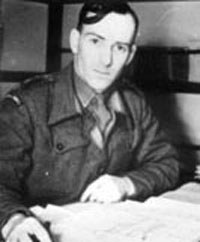Rupert Bruce-Mitford | |
|---|---|
 | |
| Born | 14 June 1914 |
| Died | 10 March 1994 (aged 79) Oxford, England |
| Nationality | English |
| Education | Hertford College, Oxford (MA, DLitt) |
| Occupation | Archaeologist |
| Spouses | Kathleen Dent (m. 1941–1972)Marilyn Luscombe
(m. 1975–1984)Margaret Adams (m. 1988–1994) |
| Children | 3 |
| Parents |
|
| Signature | |
Rupert Leo Scott Bruce-Mitford FBA FSA (14 June 1914 – 10 March 1994) was a British archaeologist and scholar. He spent the majority of his career at the British Museum, primarily as the Keeper of the Department of British and Medieval Antiquities, and was particularly known for his work on the Sutton Hoo ship-burial. Considered the "spiritus rector" of such research,[1] he oversaw the production of the monumental three-volume work The Sutton Hoo Ship-Burial, termed by the president of the Society of Antiquaries as "one of the great books of the century".[2]
Though Bruce-Mitford was born in London, the preceding two generations had lived largely abroad: his maternal grandparents as early settlers of British Columbia, his paternal grandparents as missionaries in India, and his parents as schoolteachers recently returned from Japan. When Bruce-Mitford was five, his father, who had returned to Japan two years earlier, died. His mother was left to raise the four sons, of which Bruce-Mitford was the youngest, on a tiny salary; the stresses were substantial, and Bruce-Mitford was fostered for a time after his mother had a breakdown. Bruce-Mitford attended preparatory school with the support of a relative, was admitted to the charity school Christ's Hospital five years later, and, in 1933, was awarded a Baring Scholarship in History to attend Hertford College, Oxford. Recommending him for a museum curatorship in 1936, the University Appointments Board noted that he "has an exceptional gift for research, a sphere in which he could do work of outstanding merit".[3]
After spending a year as an assistant keeper at the Ashmolean Museum, during which he produced "the first serious study of medieval pottery",[4] in December 1937, Bruce-Mitford was appointed to the British Museum's Department of British and Medieval Antiquities. The ship-burial was excavated in 1939, weeks before the outbreak of the Second World War; Bruce-Mitford spent 1940 to 1946 in the Royal Corps of Signals, and returned with a warning from the department's Keeper: "You will also be responsible for Sutton Hoo. Brace yourself for this task."[5] Bruce-Mitford spent much of the next four decades focused on the subject, publishing dozens of works, studying contemporary graves in Scandinavia (excavating a boat-grave in Sweden and learning Swedish and Danish along the way), and leading a second round of excavations at Sutton Hoo from 1965 to 1970.
In his other duties, Bruce-Mitford excavated at the Mawgan Porth Dark Age Village, published significant works on the Lindisfarne Gospels and the Codex Amiatinus, as well as the posthumous opus A Corpus of Late Celtic Hanging-Bowls, translated P. V. Glob's book The Bog People into English, and oversaw the acquisition of the Lycurgus Cup and Courtenay Adrian Ilbert's collection of thousands of clocks and watches, considered "the greatest collection of horology in the world".[6] He also founded the Society for Medieval Archaeology, and served as secretary, and later vice-president, of the Society of Antiquaries. After his retirement from the British Museum in 1977, he served as Slade Professor of Fine Art at the University of Cambridge, a visiting fellow at All Souls College, Oxford and, finally, a Faculty Visitor in the Department of English at the Australian National University.
- ^ Magoun 1954, p. 117.
- ^ Taylor 1976, p. 4.
- ^ Cite error: The named reference
MJ.198003was invoked but never defined (see the help page). - ^ Mellor 1997, p. 68.
- ^ Bruce-Mitford 1989b, p. 13.
- ^ Biddle 2015, p. 77.